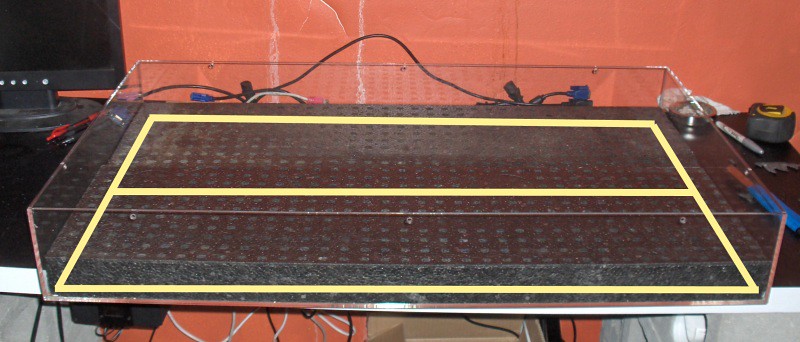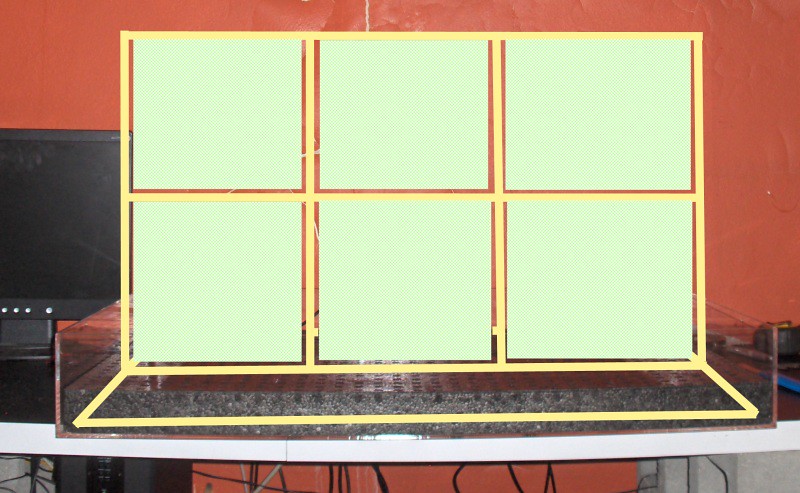Now that I repainted the trim on the little tanks I could finally pop them all in for a rough piping schematic:
Forgot to put the mangrove platform back for the photo.
Even though I built one way back I somehow forgot all about coil denitraters. Having most of the stuff already, odds are I'll end up building a tall boy as well to go in with the overkill on the cheap theme.
Here's the mangrove platform tank with rubberized foam inserts:
I think I figured out how to incorporate an overkill ATS area into the mangrove platform, which can use the same lights to light the 84 mangroves and ATS at the same time. I'm thinking use CPVC, and start with a base that wraps around the inside of the box:
I'd like to have removable turf screens (as well as other filter elements) that I can offer for sale pre-conditioned/cycled filter elements for people who want to start tanks with filters ready for action.
So what I'm thinking is have 6 10"x10" screens in an upright grid sticking up thru the middle of the mangrove platform box (with lights on each side):
This would allow me to take screens out and add fresh ones without much affecting the performance of the system.
My challenge is how to effectively pump the water up into the array and have it flow down thru them as desired. I could really use some pointers as I've never dabbled with this technology before.
I got the acrylic box and the foam for free from a 25 year old art studio that was closing last week that was posted on craigslist the day before. It's was literally everything in the place free for the public. It was a madhouse free for all. When I got the box and foam I wasn't sure what I'd do with them, but I knew I could make good use of them somehow. I had to grab for good stuff in a rush and grabbed the box on the way in. I don't know what they used it for. I also got massive stacks of various sized acrylic and polycarbonate sheets, still with the protective film on them. It literally filled the bed of my F150 half way up. A MAJOR score as I use these materials in unrelated equipment I build.




